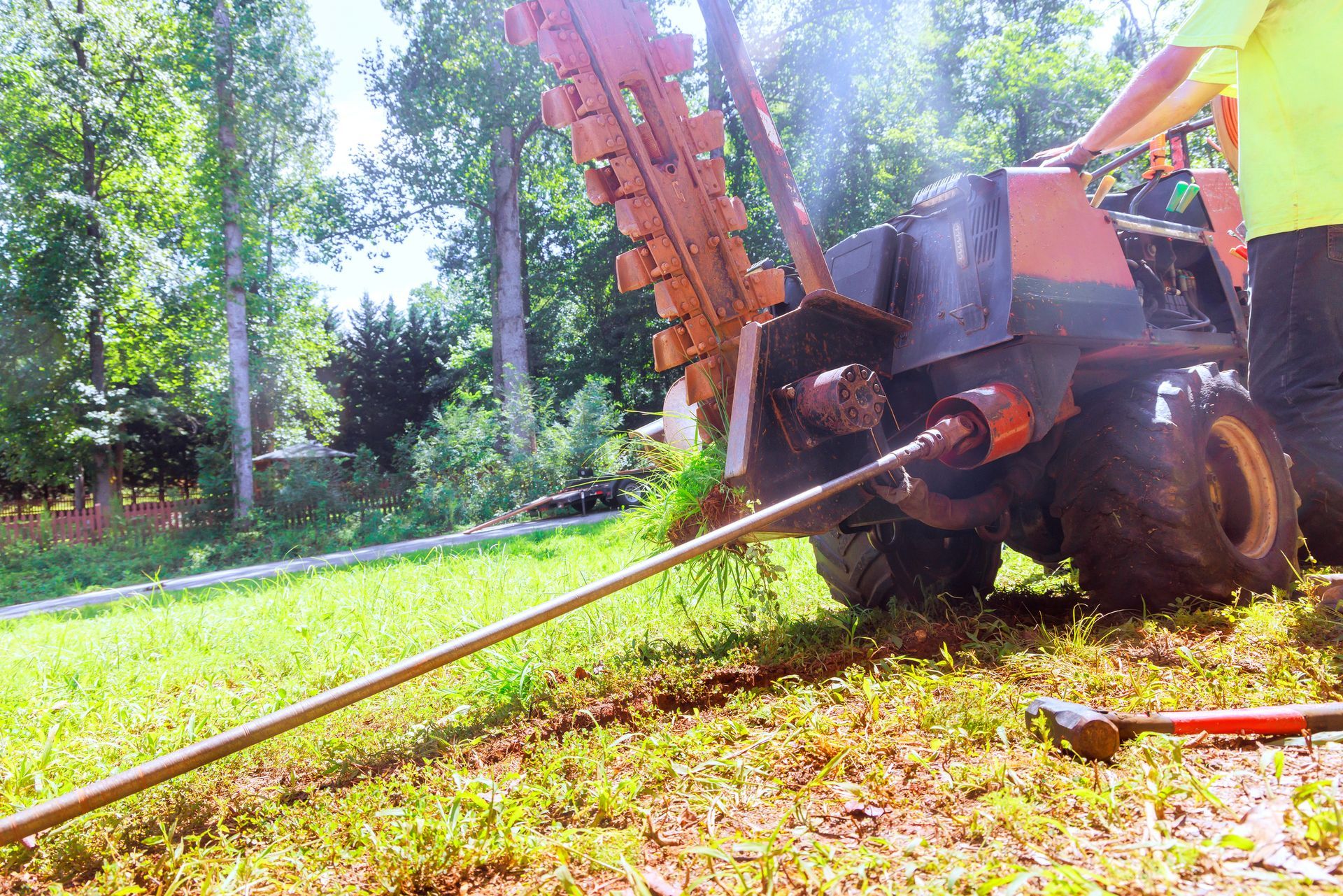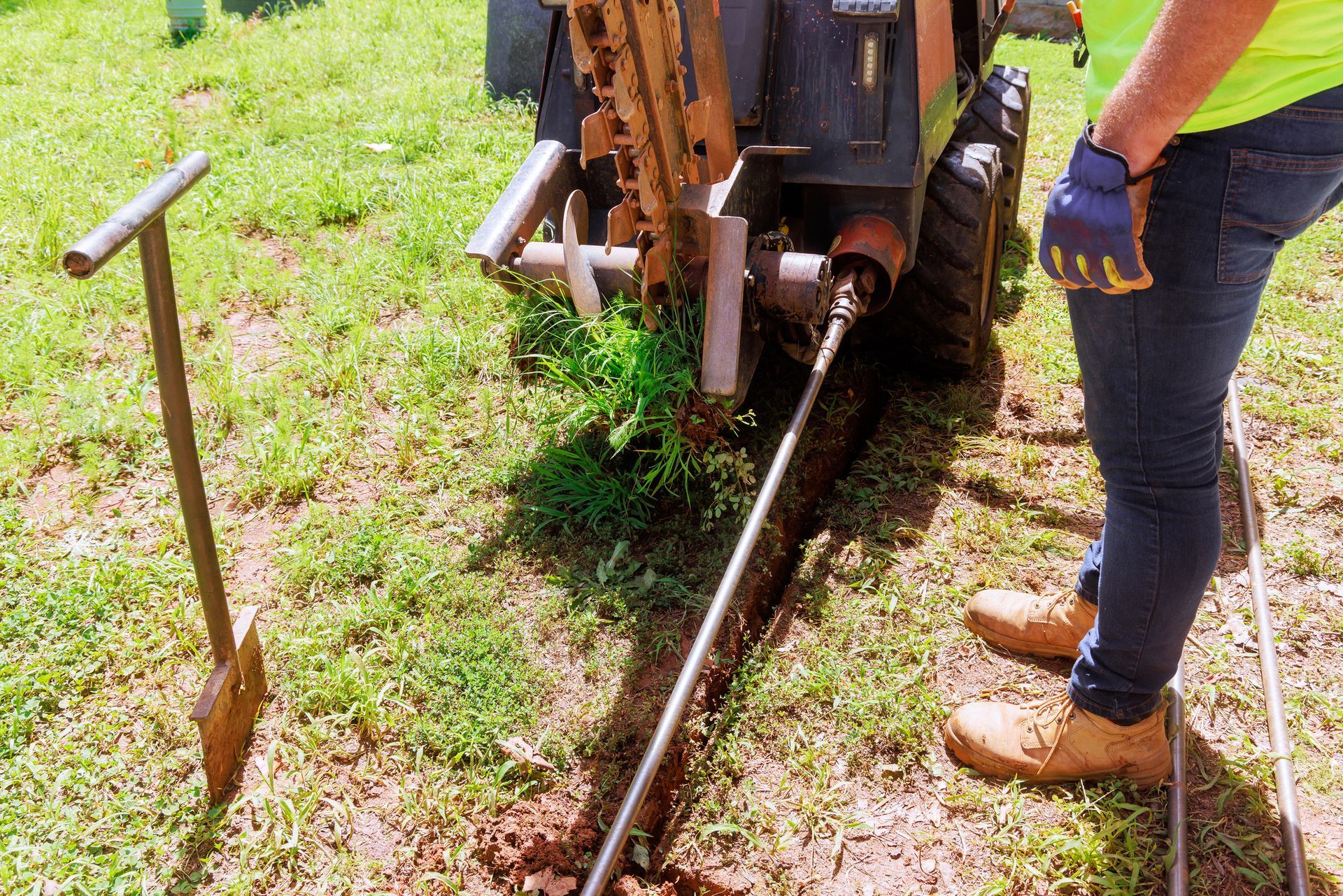Understanding What Directional Drilling Services Are
If you're facing a complex underground utility project, you're likely searching for efficient, cost-effective solutions. Directional drilling services in West Chester, OH, are gaining popularity for their ability to install pipelines, conduits, and cables with minimal surface disruption. Whether you're a homeowner, contractor, or developer, understanding the process can help you make informed decisions. This blog, brought to you by King’s Plumbing, will explain everything you need to know about directional drilling—how it works, its advantages, and why it’s the preferred method for modern underground utility installations.

What Is Directional Drilling?
Directional drilling, also known as horizontal directional drilling (HDD), is a trenchless method of installing underground utilities in a precise, minimally invasive way. Instead of digging a long, open trench, a specialized drilling rig creates a bore path underground. The drill is guided remotely to follow a predetermined route, and once the bore path is completed, pipes or cables are pulled through the tunnel.
This technology is especially useful in environments where traditional trenching is too disruptive or impossible—such as under roads, rivers, landscaped areas, or existing structures. For residents and businesses in West Chester, OH, directional drilling services offer a practical alternative for installing utilities without damaging the surface infrastructure.
How Does Directional Drilling Work?
Directional drilling services offer a cleaner, more efficient way to install underground utilities without the disruption of traditional trenching. Whether you're running new water lines, electrical conduit, or communications cables, the process is designed for precision and minimal surface impact. Here’s a breakdown of how it works from start to finish.
Planning and Design:
Every project begins with detailed planning, including soil analysis, mapping of existing utilities, and determining the best bore path. Engineers use GPS and other geolocation tools to ensure accuracy.
Pilot Hole Drilling:
A pilot hole is drilled along the planned path using a steerable drill head. Operators monitor and adjust the drill’s direction in real time to follow the precise route.
Reaming (Hole Enlargement):
Once the pilot hole is completed, it’s expanded using a tool called a reamer. This step ensures the tunnel is wide enough to accommodate the utility line.
Pipe Installation:
The final utility line—be it a water pipe, electrical conduit, or communication cable—is pulled through the enlarged borehole.
Site Restoration:
Since minimal digging is required, restoration is typically quick and inexpensive, preserving landscaping and minimizing downtime.
Directional drilling is a streamlined, reliable process that prioritizes precision and surface preservation. Whether you're working on a residential or commercial project, understanding this method helps you make smarter, more sustainable decisions for your underground infrastructure.
Benefits of Directional Drilling Services
Opting for directional drilling over traditional trenching methods provides several significant advantages: it’s faster, cleaner, and often more cost-effective. These benefits make it an ideal solution for both residential and commercial underground utility projects.
• Minimal Surface Disruption: Because there’s no need to dig a continuous trench, roads, driveways, sidewalks, and landscaping remain intact.
• Environmentally Friendly: Less excavation means reduced soil displacement and lower impact on surrounding ecosystems.
• Cost-Effective: While the initial setup may require specialized equipment, the overall project cost is often lower due to reduced labor and restoration needs.
• Faster Completion Time: Without the delays associated with open trenching, projects can often be completed more quickly.
•
Precision Installation: With real-time guidance technology, directional drilling allows for extremely accurate placement of utilities, even around obstacles.
These benefits make directional drilling services in West Chester, OH, a top choice for both residential and commercial underground utility installations.
Common Applications of Directional Drilling
Directional drilling isn’t just for large-scale industrial projects. It’s commonly used in a wide variety of applications, including:
- Water and sewer lines.
- Natural gas pipelines.
- Electrical conduit installation.
- Telecommunication cable installation.
- Irrigation systems.
- Drainage solutions.
In rapidly growing areas like West Chester, directional drilling services have become essential for developing infrastructure while preserving the existing environment and structures.
Choosing the Right Provider for Directional Drilling Services
Not all directional drilling providers offer the same level of expertise or customer care. When choosing a contractor, it’s important to consider:
- Experience and certification.
- Quality of equipment used.
- Customer reviews and testimonials.
- Transparent pricing and project timelines.
- Safety record and regulatory compliance.
King’s Plumbing stands out as a trusted provider of directional drilling services in West Chester, OH. Their deep knowledge of local soil conditions and infrastructure needs allows them to execute even the most complex underground installations with confidence.

Get Started With Directional Drilling Services in West Chester, OH, Today
Whether you’re installing new utility lines, upgrading your home infrastructure, or working on a large commercial build, directional drilling is a modern, smart solution. Don’t risk unnecessary damage to your property or prolonged delays. Contact the experienced team at King’s Plumbing for top-tier directional drilling services in West Chester, OH.
Call
to request a quote or schedule a consultation today.

